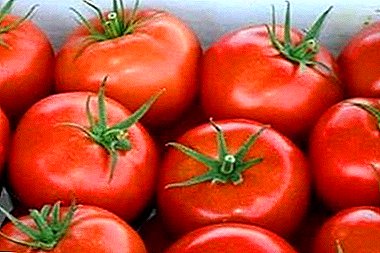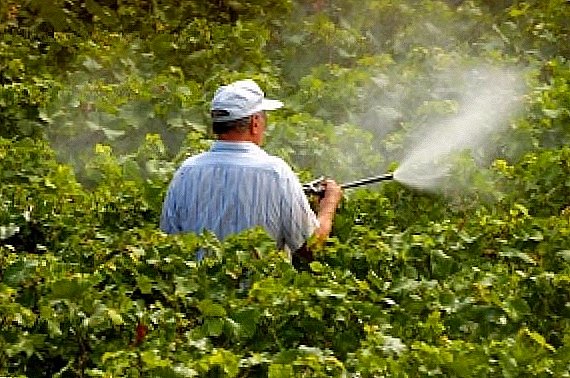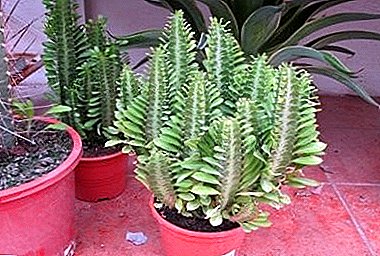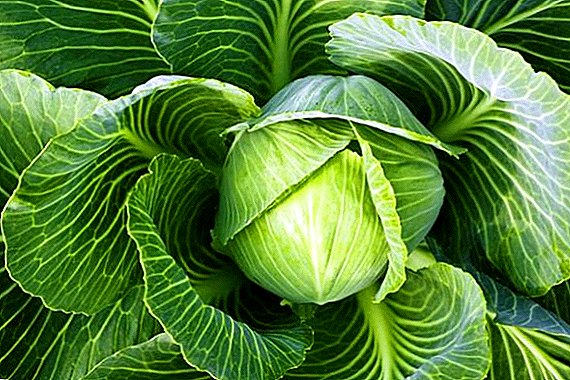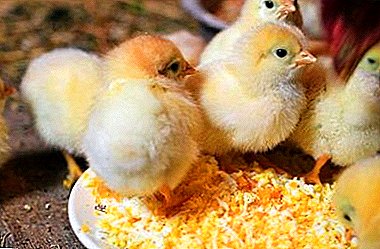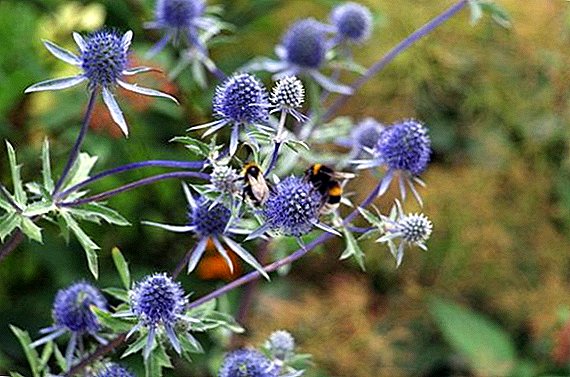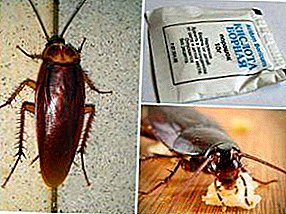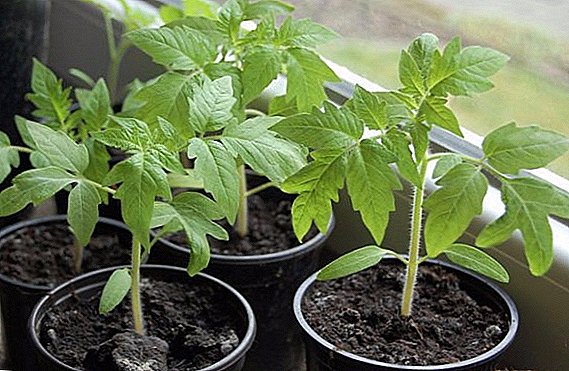 Tomatoes are one of the most popular vegetables. Without them, perhaps, can not do on any garden plot. Vegetables are very tasty, great for harvesting for the winter and have many useful substances. Often, purchased seedlings may be weak or do not correspond to the variety that you would like to purchase. But the seedlings of tomatoes can be grown and most. The article describes the basic rules for the cultivation of tomatoes by growing seedlings from seeds.
Tomatoes are one of the most popular vegetables. Without them, perhaps, can not do on any garden plot. Vegetables are very tasty, great for harvesting for the winter and have many useful substances. Often, purchased seedlings may be weak or do not correspond to the variety that you would like to purchase. But the seedlings of tomatoes can be grown and most. The article describes the basic rules for the cultivation of tomatoes by growing seedlings from seeds.
How to prepare tomato seeds before planting
Tomatoes are planted in open ground seedlings and growing it at home can be done by anyone. This of course will take some time and effort, but you will be sure that you will get it in the end. Most people for growing seedlings collect seeds from ripe fruit they like, dry them, and soak them for a couple of days before planting. That's the whole process.
However, if you want to grow good strong seedlings that are resistant to disease and gives a rich harvest, the seeds before sowing must be prepared. This procedure goes through several stages:
- drying;
- seed selection;
- disinfection;
- soaking;
- germination;
- quenching.
 Seeds need to be selected from intact diseases and pests of ripe fruit. They should be dried for a couple of days in a well-ventilated and lighted room (avoid direct sunlight). To select the best material for planting, the seeds must be immersed for a few minutes in saline. For its preparation, a teaspoon of table salt is stirred in a glass of water and infused for 10 minutes. Then the seeds are immersed in water: those that come up need to be removed, since they are empty or dried out and will not be suitable for growing seedlings.
Seeds need to be selected from intact diseases and pests of ripe fruit. They should be dried for a couple of days in a well-ventilated and lighted room (avoid direct sunlight). To select the best material for planting, the seeds must be immersed for a few minutes in saline. For its preparation, a teaspoon of table salt is stirred in a glass of water and infused for 10 minutes. Then the seeds are immersed in water: those that come up need to be removed, since they are empty or dried out and will not be suitable for growing seedlings.Important! Larger and heavier seeds contain more nutrients. From this material grow strong and fruitful seedlings of tomatoes.
After sampling, the seeds are packaged in bags and stored in a dark place at room temperature. If the seeds were stored in the cold, a month before planting it is recommended to warm them up for a couple of days on the battery in fabric products.
Most of the diseases of tomatoes take root on the seeds and can exist there for a long time, regardless of climatic conditions. therefore before planting, it is recommended to decontaminate the material. For this, the seeds are immersed for 15 minutes. in 1% solution of potassium permanganate or for 7 minutes. in a 3% solution of hydrogen peroxide, preheated to 40 degrees. 
Did you know? To increase the yield of seedlings, it is recommended to soak the seeds before sowing for a day in a nutrient solution. This may be a solution of Immunocetofit or the juice of grated fresh potatoes.
To soften the rind of the seeds and facilitate their germination, planting material before sowing should be soaked in water at room temperature for 10 hours. Seeds spread in a piece of gauze and immersed in a container. The amount of water should be 30% less than the volume of seeds. After five hours, the water will need to change.
To speed up the process of sprouting sprouts, it is recommended to germinate the seeds for five days in a wet saucer with gauze at a temperature of 20-22 degrees. 
Important! During germination, make sure that the gauze does not dry out and at the same time was not too wet.
In order for the seedlings to be resistant to temperature extremes and cold snaps, it is recommended to harden the seeds. In addition, such seedlings bloom earlier and will bring much more yield. To this end, the seeded seeds are placed in a refrigerator for the night (the temperature should be from 0 to +2 degrees), and during the day they are stored at a temperature of 20-22 degrees. Manipulations are carried out several times.
Selection and preparation of soil
Tomato seedling is not very demanding on the ground. The soil for seedlings of tomatoes at home can be both purchased and prepared independently. When buying, preference should be given to peat soil.
 To prepare the soil yourself, you need to take a loamy soil and add a little humus, compost. Seedlings will grow well in loose soil. To do this, you can add peat or sawdust to the mixture.
To prepare the soil yourself, you need to take a loamy soil and add a little humus, compost. Seedlings will grow well in loose soil. To do this, you can add peat or sawdust to the mixture.
For planting seeds also use coke substrate. It contains many nutrients, prevents rotting sprouts, promotes the development of a powerful root system.
Did you know? Peat tablets are well suited for growing strong seedlings, and 4-5 seeds can be sown in them. When planting in such a soil in the future, dive seedlings are not necessary.
Capacity for growing seedlings
The choice of capacity for growing seedlings is of considerable importance. Seeds can be sown in these types of dishes:
- boxes for seedlings;
- trays, cassettes;
- pots for seedlings;
- peat tablets or pots;
- disposable cups.

Important! The best option would be trays or cassettes with a mesh size of 5-6 cm and a side height of 10 cm. When purchasing, be sure to check what the container is made of. It is better to purchase a tray (cassette) of polystyrene. Do not buy containers from polyvinyl chloride, it contains toxic substances in its composition.
Pots for seedlings and disposable cups - the best option from the inexpensive. In them, seedlings can be grown until transplantation into open ground. However, such containers take up a lot of space and are not very convenient if the seedlings need to be transferred to another place. At the bottom of the tanks for planting seeds must be drainage holes.
Peat tablets - ideal. They contribute to the development of a strong root system in sprouts, prevent seedling rot. However, this pleasure is not cheap.
Sowing tomato seeds for seedlings
Sowing tomato seeds in seedlings should be carried out March 15-20. The first shoots will appear in a week. Another two months will pass before the flowering of early-grade tomatoes, and another week will be needed to restore the plant after a dive. In early June, seedlings will be ready for planting in open ground.  Before planting the soil should be slightly wet. Seeds are dug into the soil no more than 1 cm and at a distance of 5 cm from each other. Then you need to cover the container with a film or glass. After sowing the vessel should be placed in a warm place with a temperature of about 25 degrees. Under these conditions, seedlings will appear within a week.
Before planting the soil should be slightly wet. Seeds are dug into the soil no more than 1 cm and at a distance of 5 cm from each other. Then you need to cover the container with a film or glass. After sowing the vessel should be placed in a warm place with a temperature of about 25 degrees. Under these conditions, seedlings will appear within a week.
Care and cultivation of tomato seedlings
After the seedlings appear, the seedlings need to be moved to a lighted and cool room. Temperature range should be from +14 to +16 degrees. The room is bright. If there is none, you can arrange the sprout backlighting with the help of lamps.
After a week, the temperature should be slightly increased to +20 degrees, and at night to lower by a couple of degrees. To do this, you can open the window, but do not allow drafts.
Did you know? In the first few days after germination, it is recommended to arrange for seedlings around the clock illumination. This will greatly accelerate its germination.
Watering seedlings of tomatoes for growing at home should be moderate and carried out with water at room temperature. Until the first good sheet appears, lightly spray the soil with water when it becomes completely dry. After the appearance of the leaf, watering is carried out once a week, and after the formation of five good leaves, the seedlings are watered every 3-4 days.
Dive tomato seedlings
A dive is transplanting seedlings into separate containers. This contributes to the formation of the root system. There is a growth of lateral roots, improved plant nutrition. The seedling becomes stronger and will easily take root in the open field, will give a good harvest.  Picking of seedlings of tomatoes is carried out on the tenth day after the first shoots appear. However, in each case it is necessary to approach individually. The general rule is that the seedlings dive on the second day after the appearance of the first true leaflet.
Picking of seedlings of tomatoes is carried out on the tenth day after the first shoots appear. However, in each case it is necessary to approach individually. The general rule is that the seedlings dive on the second day after the appearance of the first true leaflet.
Important! When diving, only the best and healthy shoots are selected, and the rest must be thrown away. Also on the root of each sprout should be a small earthen ball.
A couple of days before picking, the seedlings need to be watered slightly so that the shoots can be removed more easily. You need to remove seedlings from the ground very carefully so as not to damage the still weak roots. It is advisable to undermine them with a stick or toothpick. Replace need in deeper capacity. To do this, you can use pots, disposable half-liter cups or plastic bottles with a cut neck.
After picking, sprouts are plentifully watered and transferred to a cool place with moist air. On the seedlings should not fall direct rays of the sun. After a week, the seedlings are returned to their former warm place.
Hardening tomato seedlings
Hardening of seedlings is recommended so that when planted in open ground it does not freeze, it is resistant to temperature changes that often occur in the summer. Let us consider in more detail how to temper tomato seedlings.  When it gets warmer outside and the temperature reaches 15 degrees, the containers with the seedlings are taken out onto the street or balcony. Before this, the plants are watered. During hardening, you need to monitor the temperature. When the temperature drops below 8 ° C, containers should be brought to a warmer room. It is better to take out seedlings after four or five o'clock in the evening, when the sun is a little lower. Otherwise, it may fry. You also need to monitor the soil, it should not dry out. If the soil is dry, it needs to be watered a little. Do not leave containers in direct sunlight. The hardening period is two weeks.
When it gets warmer outside and the temperature reaches 15 degrees, the containers with the seedlings are taken out onto the street or balcony. Before this, the plants are watered. During hardening, you need to monitor the temperature. When the temperature drops below 8 ° C, containers should be brought to a warmer room. It is better to take out seedlings after four or five o'clock in the evening, when the sun is a little lower. Otherwise, it may fry. You also need to monitor the soil, it should not dry out. If the soil is dry, it needs to be watered a little. Do not leave containers in direct sunlight. The hardening period is two weeks.
Prevention and protection of tomato seedlings from pests and diseases
Growing tomato seedlings is often overshadowed by fungal diseases and pests. In order not to face such troubles, it is recommended that tomato seedlings be treated with fungicides, insecticides, or folk remedies.
The most common diseases of tomatoes are:
- late blight;
- macrosporosis;
- spotting;
- brown rot;
- septoriosis;
- viral diseases.

- periodically loosen the ground;
- Avoid thick planting;
- do not flood the seedlings;
- tear off the lower darkened leaves;
- before planting in open ground, process the seedlings with a 0.5% Bordeaux liquid;
- process the plants and the soil with kiln ash (handfuls of ash should be scattered in the direction of the wind);
- in the first feeding of seedlings is recommended to add a little copper sulfate (2 g per 10 liters of hot water).
Did you know? To reduce the risk of fungal and viral diseases, it is not recommended to plant tomatoes near potatoes, peppers, eggplants, or in places where such crops grew last year.
The most common pests include:
- Colorado beetle;
- thrips;
- aphid;
- cicadas;
- whiteflies;
- pincers;
- Medvedka.

Now you know how to grow tomato seedlings from seeds, the main secrets with which you can protect plants from adverse climatic conditions, diseases and pests. Compliance with the described rules also guarantees a high yield of tomatoes.



